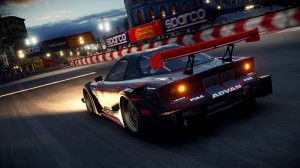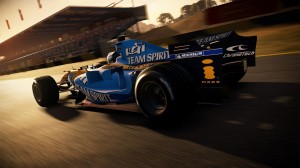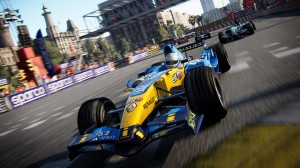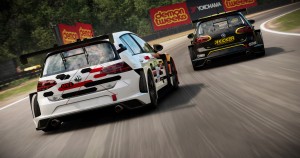GRID (2019)

by Nathan Rowland
reviewed on PC
A false start
In the opening sequences of Codemasterís Grid (2019) I was thrust immediately into the driverís seat for its Ďtutorialí race. As the timer dramatically blares on its countdown to 0 before the race began, I sat at my keyboard frantically searching for the command key to accelerate. No worries, here comes a command prompt! ĎHold RT to accelerate, Hold LT to brakeí. Fantastic. Everyone else has driven off and Iím lapped before I figure out the rudimentary controls for moving forward. Okay, first corner coming up, how do I turn? No command prompt, why should there be? If I was using a controller it would be second nature to assume that the joystick is what turns your vehicle. But as Iím not, and I donít have my controller to hand, I crash headfirst into the bollard.
Blind corners
Iím definitely outing myself as someone who is an amateur at racing games. Nevertheless, the first communication I have from a PC game telling me to use buttons from an Xbox controller is slightly disconcerting, especially when such a peripheral isnít connected to my system. After chugging my way to last place in this tutorial race, I couldnít help but feel out of the loop when Iím not communicated to effectively in a tutorial setting. And this seems like a consistent tone across Grid (2019), a place for enthusiasts to come and admire its graphic splendour and selection of vehicles whilst quietly shooing new players out the back door.
This becomes apparent once having played a few races in the gameís career mode Ė the area where most of the experience resides in Grid (2019) Ė as various mechanics like the Ďnemesis systemí or members of your team are given no exposition or instruction as to their effect on gameplay. It is even harder yet to decipher what the impacts of these mechanics are when it feels like the game isnít itself quite sure. Telling a teammate to Ďattackí or Ďdefendí in relation to your position in the race or making a nemesis of each and every other driver by continuously crashing into them seems to have little impact so long as your stick to the racing line and know when to brake and when to accelerate.
This leads into another problematic issue, its difficulty. In the first few races, the instinct to accelerate into tight corners past the other cars who will slow too quickly will increase your position rapidly, a fairly amateurish tactic. Yet, as the game progresses in the career mode, unlocking more locations and cars to race alongside, there is no incentive to change from this routine. Unless the player wilfully increases the difficulty in the settings, there is no apparent sense of a scaling challenge in their progression towards the gameís climactic world series. Solace is not to be found in its multiplayer matches either. In a week from launch, after two separate instances of searching for a game lobby, I was not able to secure a match within 20 minutes of connecting. This seems somewhat indicative of its currently lacking popularity, a shame considering the sportís inherently competitive design. And in lacking multiplayer, the experience feels only half available for its remaining players. For these reasons, I canít help but think that this game isnít really orientated towards seasoned players either.
The handling and the modelling of the cars is certainly its most praiseworthy feature for those seeking a racing title which grounds its frenetic speed in realistic physics. The tactile differences between heavyweight American muscle-cars versus the light and zippy feeling of the Formula 1000 cars, the consistent and cumulating damage. But this is where its enjoyable features begin and ends. For a race game veteran, the conflation between arcade style driving and realism-bound racing makes for a fun transition between hyper-simulated games like Assetto Corsa versus the gamey feels of a title like Colin McRae: Dirt 2. Yet, it falls short of both categories by never fully committing to either, lacking features within the actual racing (pit stops, tyre degradation) as well as in its meta-game (cars cannot be upgraded/altered in any way). Thereís truly a decent game here with its foundational systems that could be developed into a more well-rounded title.
Itís a drag
But as it stands this is a £45 game, it is neither fair nor warranted that this game is just okay. Codemasterís had already promised ahead of its release that Grid (2019) would be receiving a bevy of further racetracks, cars and modes for its player base. Yet with a dwindling interest, this seems too little too late.
3.6
fun score
Pros
Gorgeous and faithful track designs, authentic feeling vehicles
Cons
Lack of content, dwindling player base, anti-amateur design







